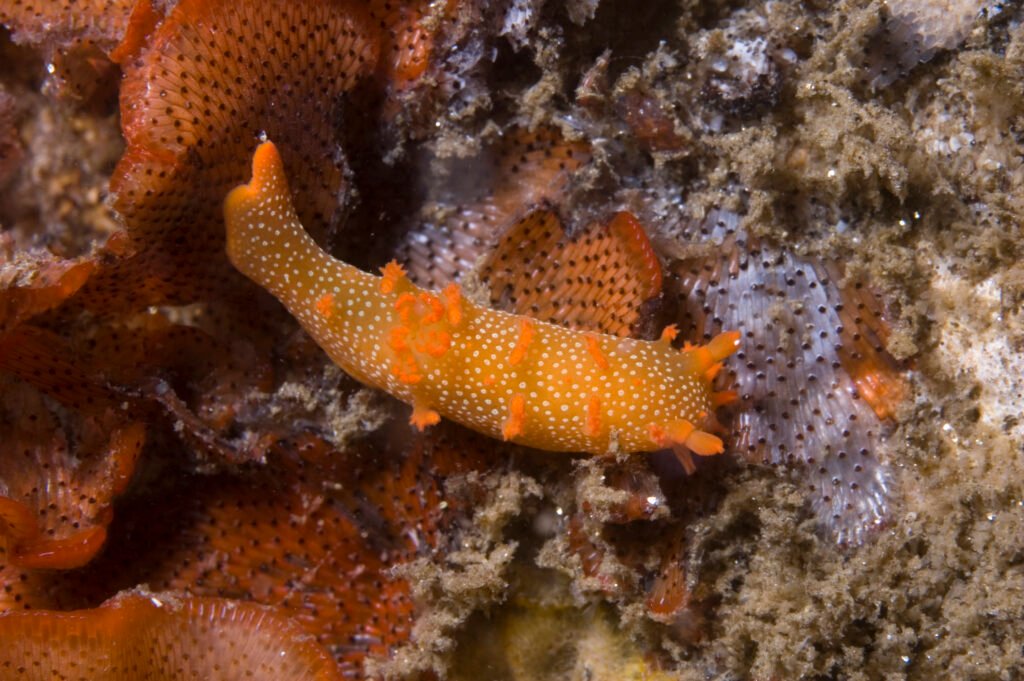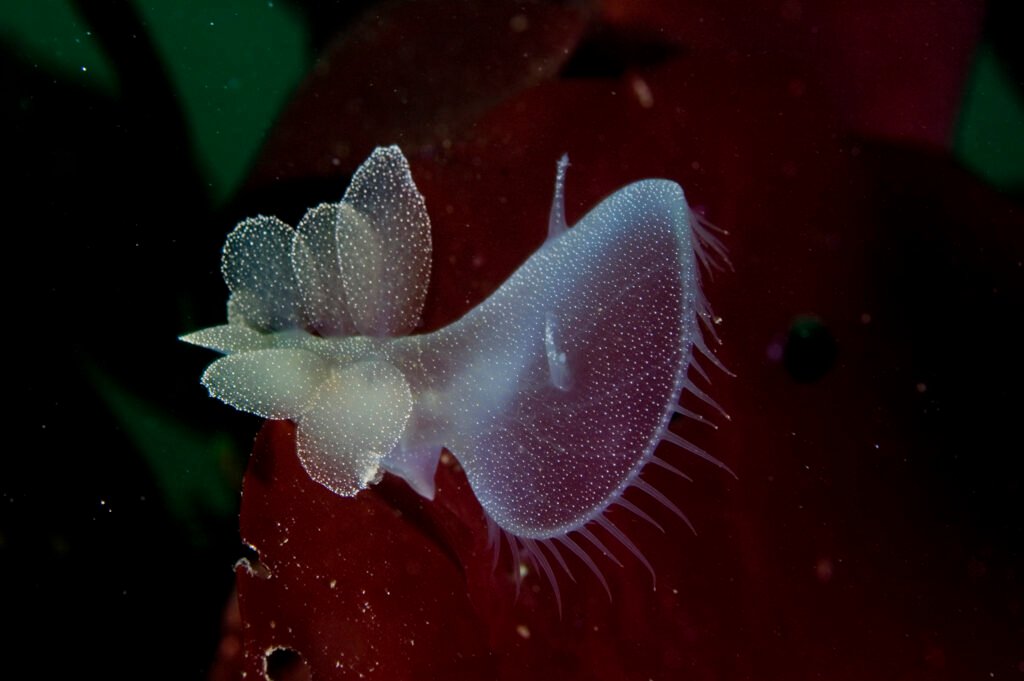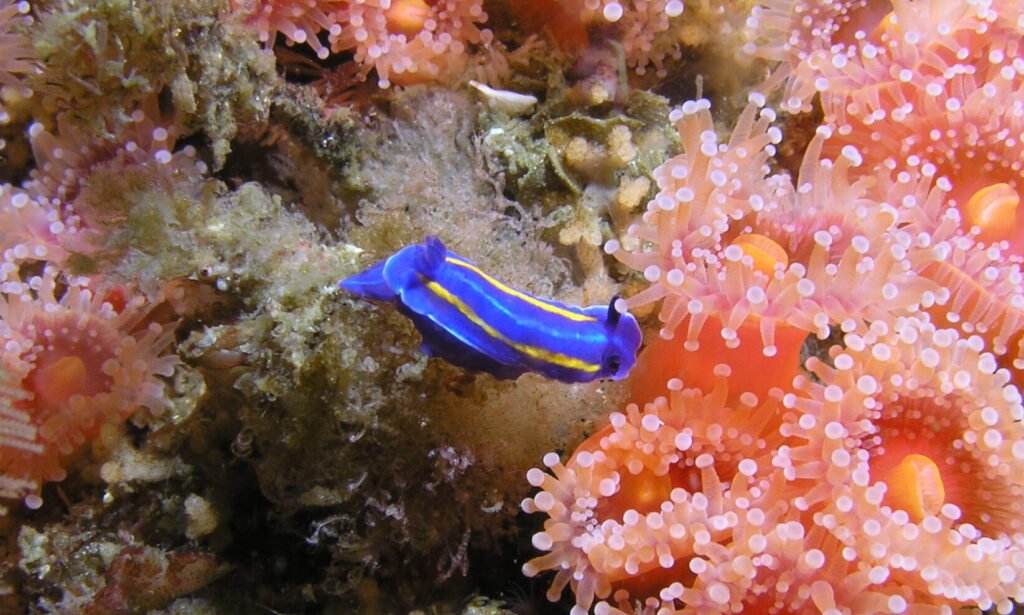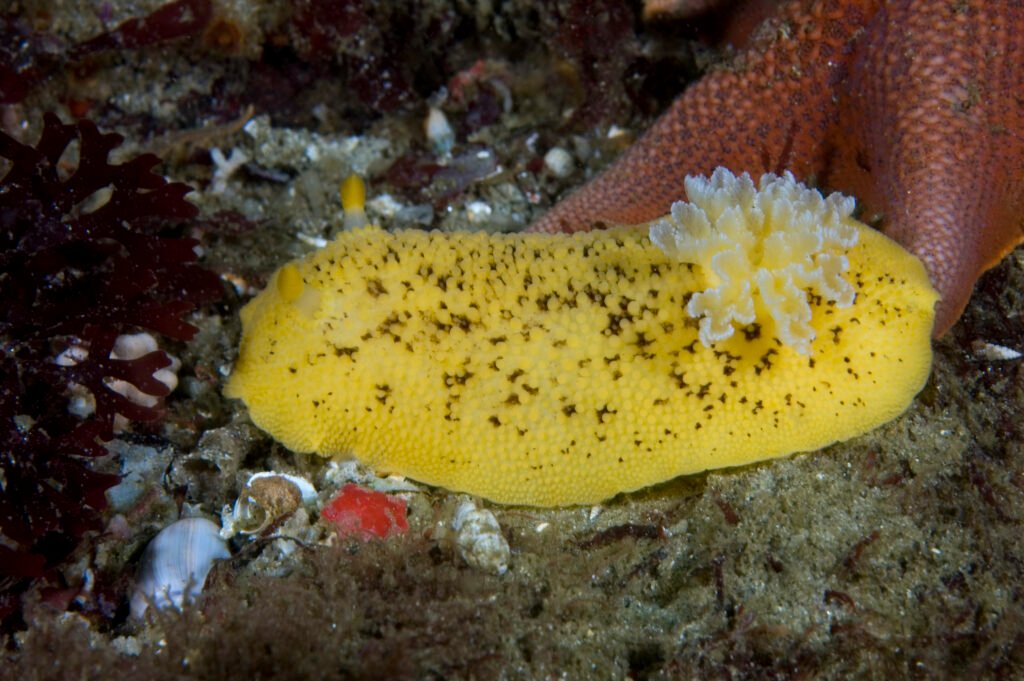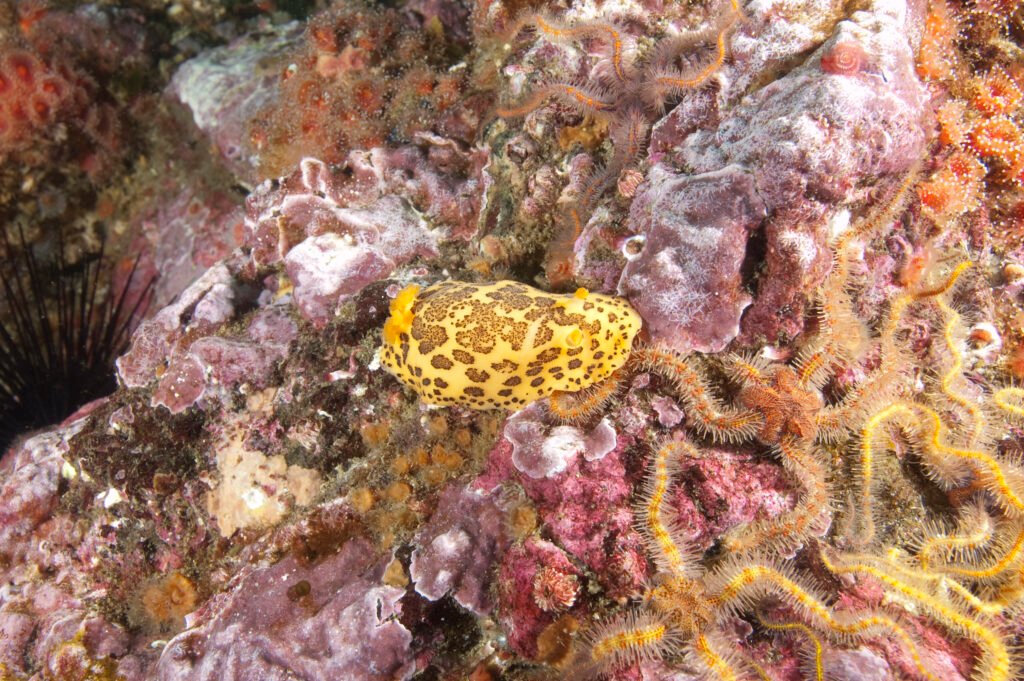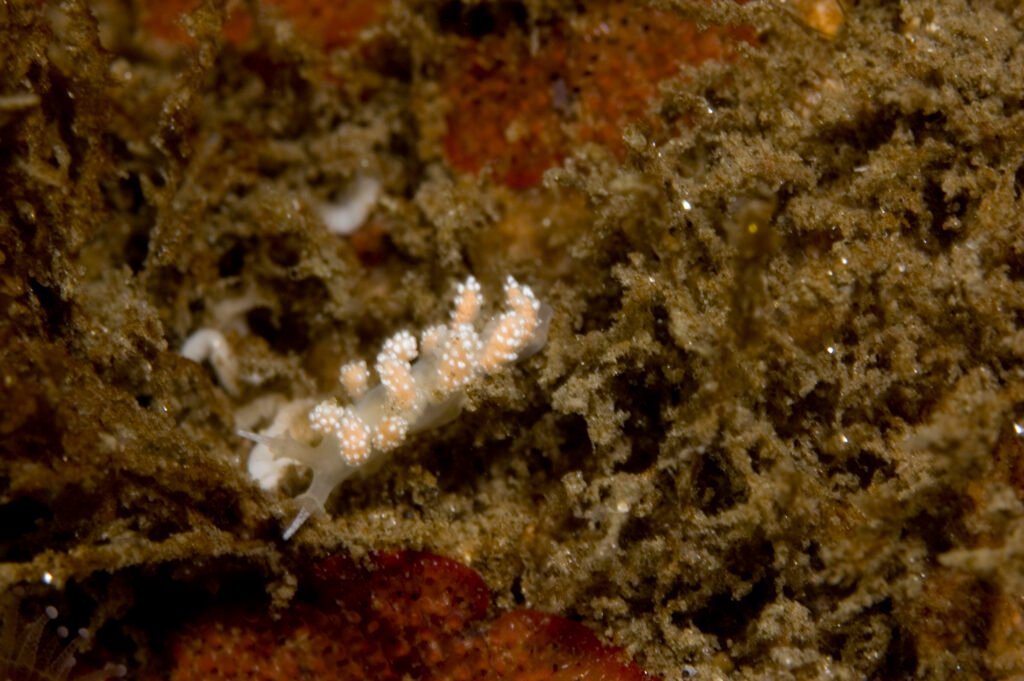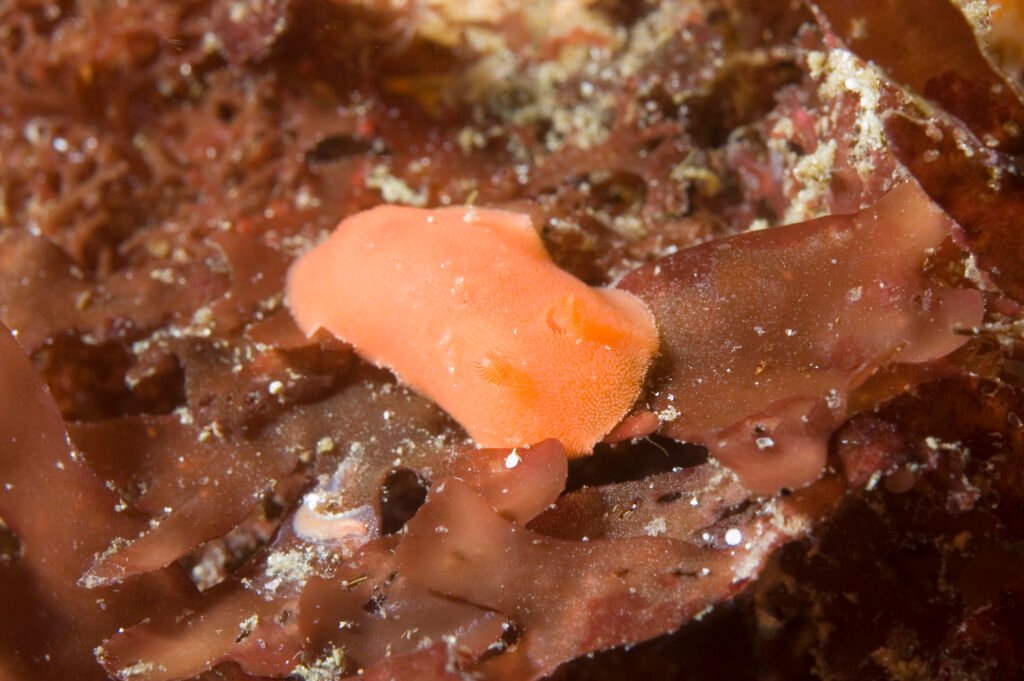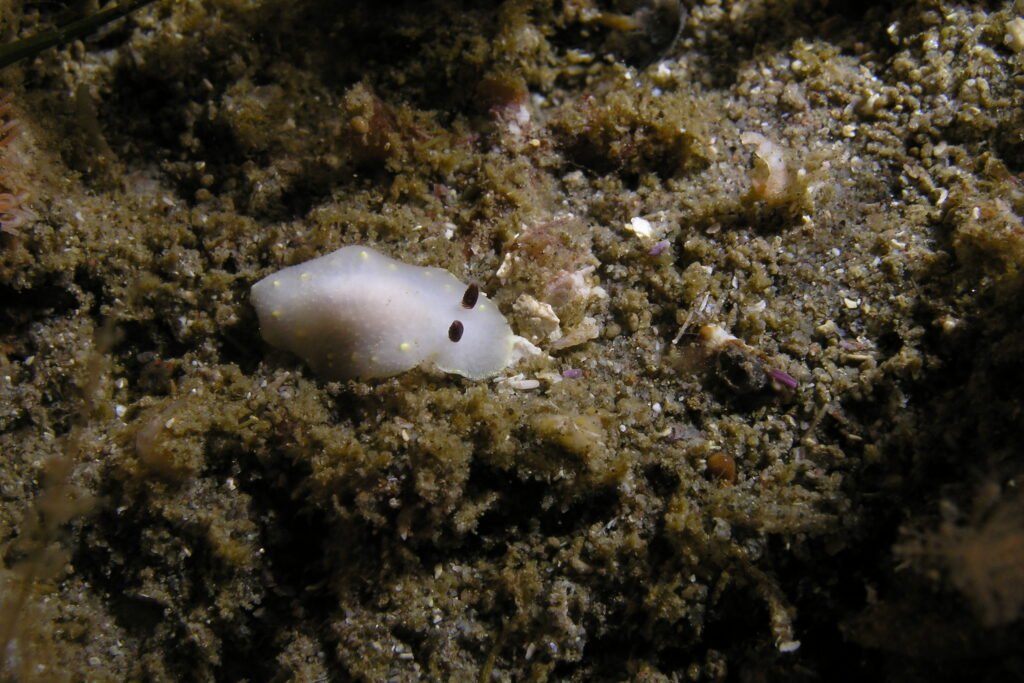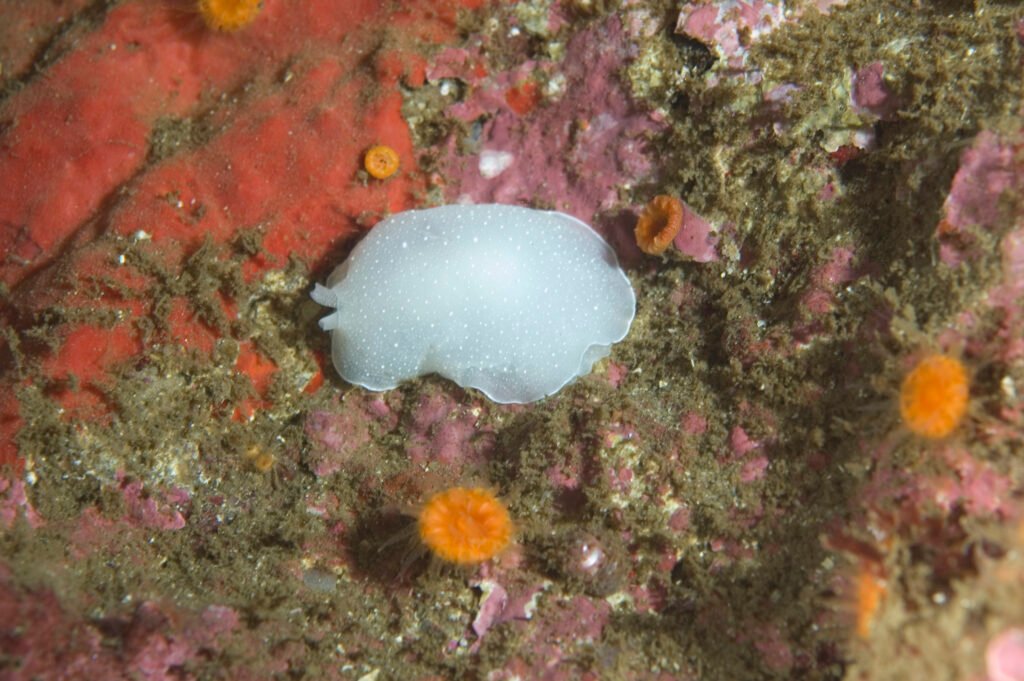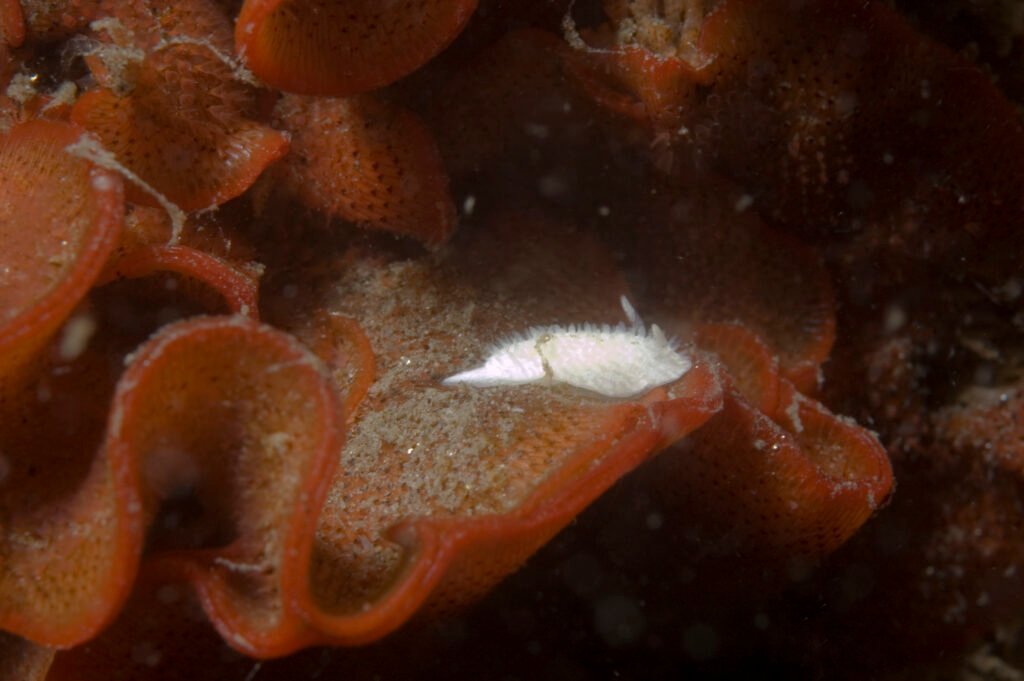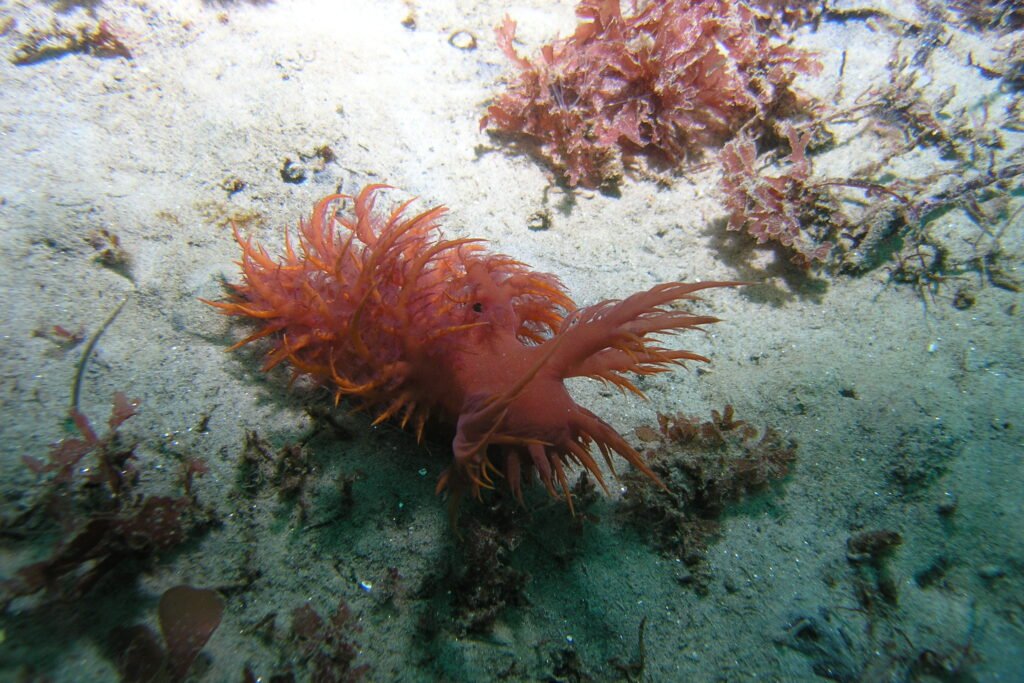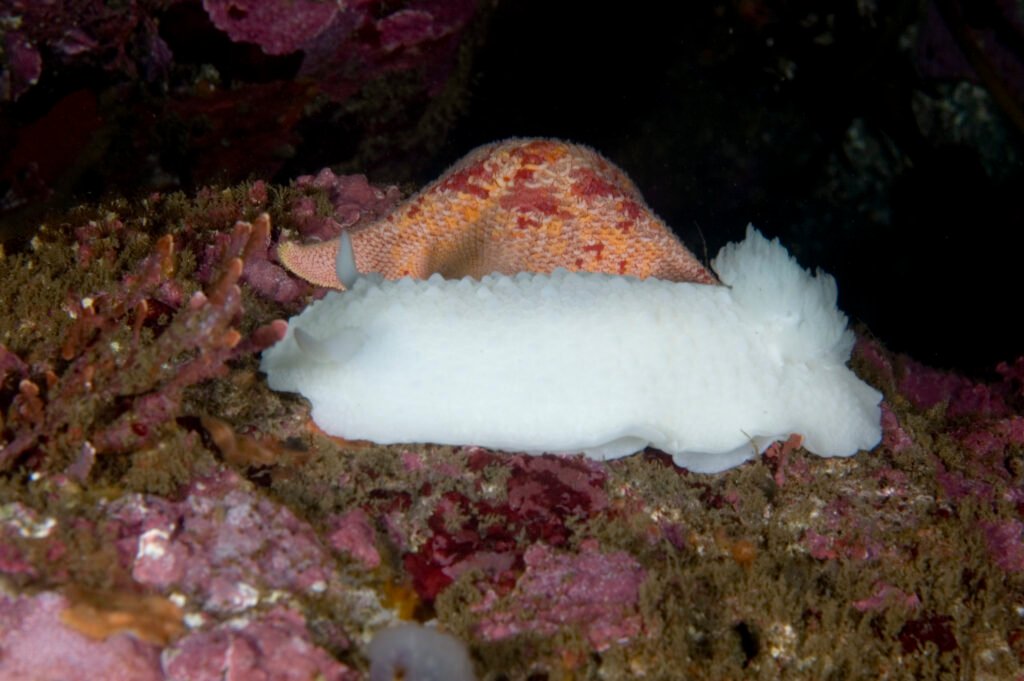Physical Description
The Spotted Triopha, scientifically known as Triopha maculata, presents a varied array of colors, ranging from clear, light orange to darker shades of orange, yellow-brown, or yellow. In larger specimens, the dorsum showcases numerous round to oval spots, ranging from pale blue to almost white, sometimes accompanied by smaller dark brown dots. The pallial ridge features 4-6 yellow to orange or vermilion processes, each adorned with small branches or tubercles, often with white tips. Similarly, the frontal veil bears 7-12 similar processes. Rhinophores boast 15-20 lamellae, matching the body color or slightly darker. Branchial plumes, numbering 5-7, are tripinnate and range from white to orange. The labial tentacles are auriform in shape. Typically, Spotted Triophas measure between 20-30mm in length, although some specimens may exceed 180mm.
Habitat and Geographical Range
Spotted Triophas inhabit the marine environments along the eastern Pacific coast.
What They Eat and How They Breed
These nudibranchs likely feed on various marine organisms found in their habitat, although specific dietary preferences and breeding behaviors have not been extensively documented.
